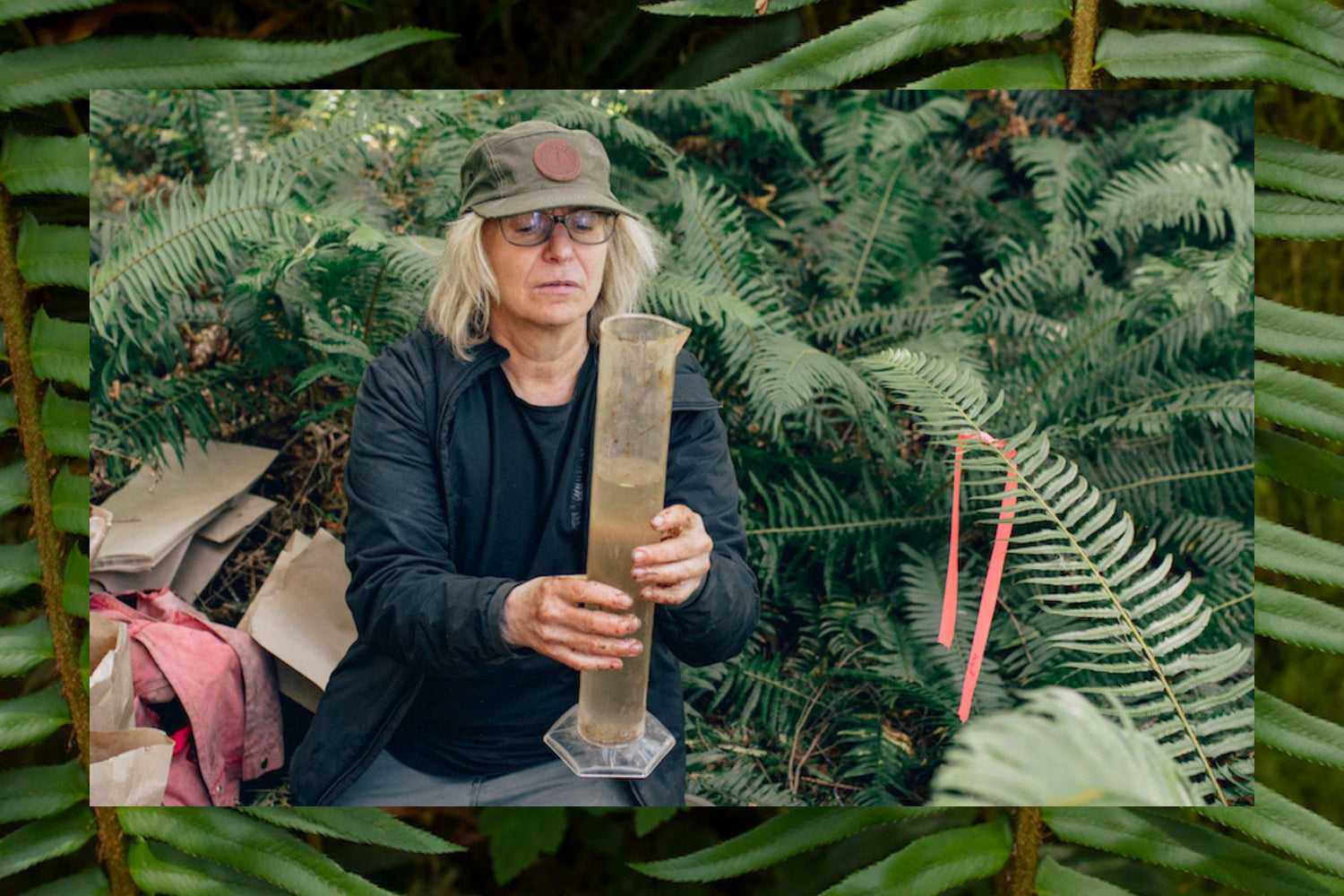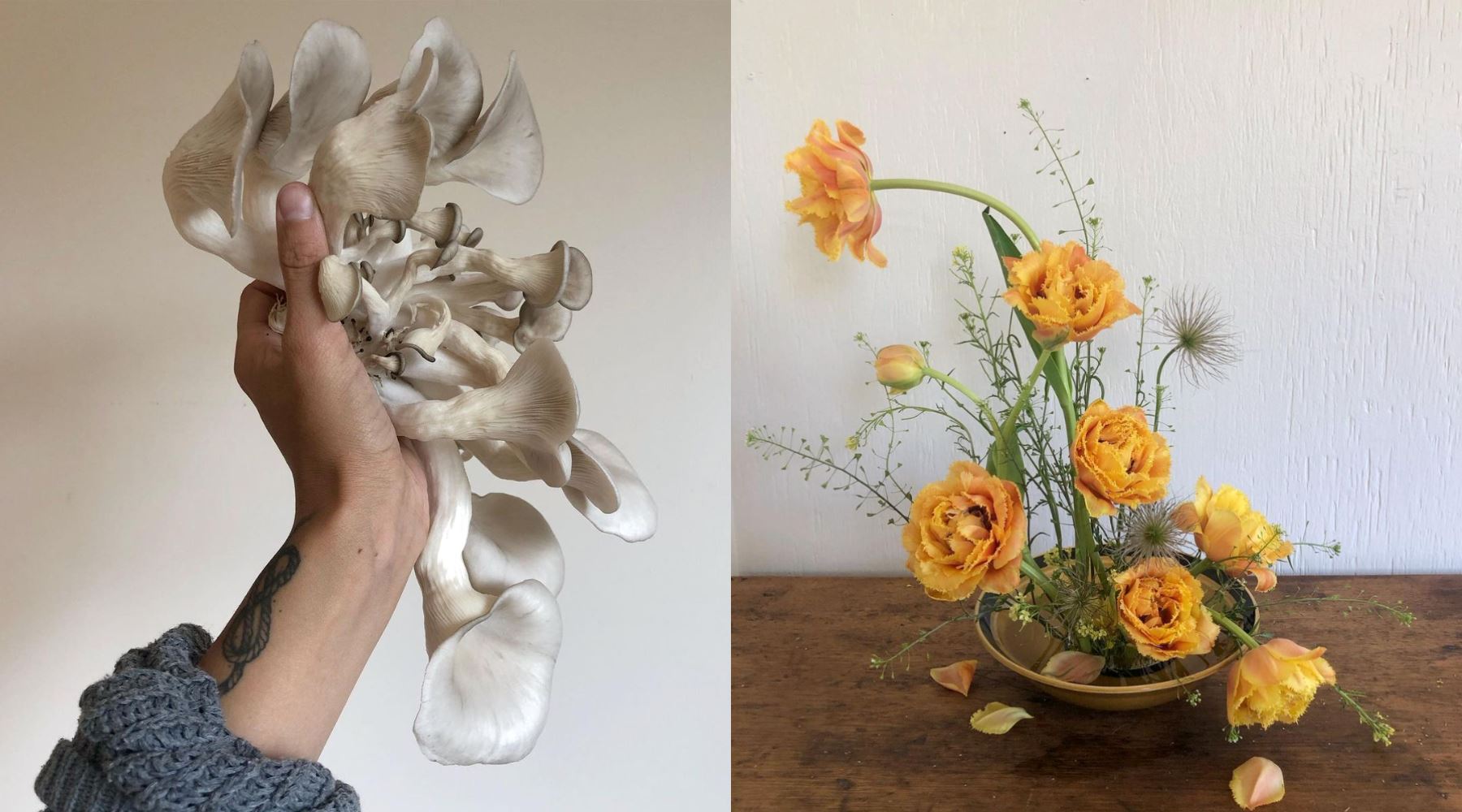This profile and Q&A is a continuation of our series on the Awi’nakola: Tree of Life project.
Dr. Suzanne Simard is a world-renowned forest ecologist, professor of forest ecology at the University of British Columbia, and the author of Finding the Mother Tree: Discovering the Wisdom of the Forest. With forty years of experience, Dr. Simard is known for her work on how trees interact and communicate using mycorrhizal fungal networks. This has led to the understanding that forests have large and highly connected Mother Trees which play an important role in the flow of information and resources in a forest.
Her current research investigates how these complex relationships contribute to forest resiliency, adaptability and recovery with far-reaching implications for how to manage and heal forests from human impacts. “My purpose in all of this is to protect our forests, to restore the ones that are damaged, and to help the world find natural solutions to climate change,” she says.
We caught up with Dr. Simard during our week in the forests of Kwakwaka’wakw Territory with the Awi’nakola: Tree of Life project. Along with a number of young scientists, Dr. Simard was there working on the Mother Tree Project, a field-based research project investigating forest renewal practices that will protect biodiversity, carbon storage, and forest regeneration as the climate changes. Together, the Awi’nakola and Mother Tree projects share resources on how to replenish the forest, much like old growth Mother Trees themselves.

ecologyst: How did you get involved in the Awi'nakola: Tree of Life project?
Suzanne Simard: I got a call from Mak’wala, Ma’amtagila Hereditary Chief Rande Cook, after he had come across my Ted Talk. He was looking for ways to convey the deep connection in the forest, and he told me of his lifelong quest to restore rights and title to his lands in Ma’amtagila Territory. In my work with the Mother Tree Project, I was already trying to make deep connections with First Nations people to help inform my science, and vice versa. So this was a dream come true for me. We realized in our conversation that we were both working on the same goals and we were looking at these incredible old trees and how they are the great matriarchs of the forest and how they provide the energy for the entire social network of the forest. We had an immediate connection and started working together right away, and have been ever since.
e: Are you able to describe some of your findings so far with the Mother Tree Project, specifically in the coastal forests?
SS: I've been working on the Mother Tree Project since 2015, and some of the key findings are that a changing climate really matters to our forests in that it reduces their growth rates, it stresses out the trees, and it has a big effect on their regenerative capacity. But if we protect the old matriarch trees in the logging process, they nourish the forest. They actually promote the regenerative capacity of the forest by protecting the plant communities, the forest floor, the soil, and all the carbon and nutrients and life in the soil. And the soil is the foundation of the forest.
If we don't protect these old trees and instead we go into the forests with our conventional logging practices, we are losing upward of 70% of carbon in coastal ecosystems as soon as we log these forests. A crucial loss being in the forest floor, which is where life is. And you can't get that back overnight. We don't even know how much we've lost—the Mother Tree Project is quantifying that—but we know the losses are big. In the BC Interior forests, we've lost 60% of carbon. What I’m observing from our early examinations here in these coastal forests is that it's far more than that.
The other thing we found that's really important is that when we leave the Mother Trees behind, they take in species and plants migrating from warmer climates like they’re their own family and protect them. They provide resources directly to them—water, nutrients, carbon—and the survival of these new migrants goes up by 30%. And so this is crucial as we help our forests adapt to climate change. Clear cutting is a disaster and it should not be what we're doing, and that's what we're finding.

e: During our week in the forest with the Awi’nakola: Tree of Life team, you spoke a lot about regeneration of these second growth forests. Are you able to elaborate on that idea?
SS: The standard practice in forestry today is to clear cut and convert original forests into tree farms. There's lots of impacts from that. When I talked about the loss of carbon, the loss of forest floor, the loss of carbon stocks overall in the ecosystem, the other huge loss is biodiversity. And we do that on purpose, right? We log these forests and then plant these dense tree farms and spray them and get rid of the native plants with this notion that we're going to entrain all those resources into these planted trees.
When you go into these second growth forests they're like biological deserts; they've been stripped of their plants. They've been packed in with trees. And the understory is so dark that hardly anything is growing, except for the odd struggling fern and little patch of moss. There's no light coming in. There's no life, no birds. We need to go in and help restore these forests.
In spite of all we’ve done, the forest is incredibly regenerative. The seeds of the salmon berries, the salal, and the huckleberries are still living in the forest floor, even though they're not in these forests visually; they're oppressed underneath this very dark canopy.
So the obvious thing to do is to open up those canopies. By opening them up, taking out the smaller trees, making gaps of different sizes, it will promote the growth of those shrubs and herbs that require a bit of light. Then, when we can occupy the niches with plants and moss and ferns, they’ll start to photosynthesize. And in that photosynthetic process, they rebuild biodiversity among the forest floor. And the trees that are left behind grow better because they're healthier. So I think that restoring these vast managed landscapes is absolutely crucial and is a natural solution to climate change. It will draw down CO2 because the forest will be more vibrant and healthier.
e: What's the goal for both the Mother Tree and Awi’nakola projects coming together?
SS: The overall goal is to get us back to understanding the land, to inspire people, to provide a place for people to come to and work with the land. Rande—Chief Mak’wala— has a specific goal of providing opportunities for his people to go back to their land in Ma’amtagila Territory.
We are all part of this big biosphere, part of Gaia, and we bring great energy and ideas. I feel like everybody has a job right now, and a responsibility to get back to the land and care for it, in whatever way that means—doesn't mean always having your hands in the soil! It could mean making choices in your day-to-day life about what you buy and don't buy. It's all about being mindful and intentional about living your life so that we're working with the land.
Within that, we have this crucial moment in history where we have a very short window to act, because we're in a climate change and biodiversity crisis. We've been called to action by very high levels of international bodies, like the International Panel on Climate Change. We have a very strong, increasing confidence in what that future will look like, and it's not great.
There are some easy things we can do. In our social structures they might not be so easy, but conceptually, they're very simple. One is to protect the planet’s remaining old growth forests, because those are the greatest storehouses of terrestrial carbon that we have. These old forests are being cut down every day, whether you're on northern Vancouver Island or in the Amazon or in the Congo. So we need to gather together as a global community and put a stop to this.
Secondly, we need to go into our damaged forests and restore them. We need to refocus our efforts from exploiting and destroying our forests to caring for and regenerating them. So, those are two goals that the Awi’nakola and the Mother Tree projects have: coming together from a deep cultural, historical, ancestral way of seeing the world and combining that with our scientific knowledge system. A system that is helping to uncover and generate data that's actually supportive of what the Ma’amtagila have known for thousands of years. These are two entwined [knowledge] systems saying the same thing. So we want to work together to provide hope, to provide a mechanism, to invite everybody on board so we can achieve these big goals.

e: How important is it for you that projects like this are Indigenous-led? That Indigenous knowledge is at the forefront and the voices that have been ignored for so long are being heard and are given not only a spot on a table, but actually opening the circles?
SS: The Awi’nakola: Tree of Life being Indigenous led is crucial. It’s a huge opportunity for us to bring these knowledge systems together. Indigenous knowledge is so deep, so scientific and so verified and has been applied for thousands of years. It leads the way. That's where the true, deep understanding lies. Not only that it's connected to spirit, it's connected to people. It is about people, that we're all in these ecosystems together. That way of seeing the world is the solution to our problems. So to me, it's a great honor to have been invited to participate in this and help and be in service to the Awi’nakola Project, because Western knowledge is so tiny in comparison. If you think about, the development of Western science and going back to European philosophers a thousand years ago, with Descartes, Plato, Locke, it was very much about deconstructing ecosystems and reducing them down to their parts, separating men from nature, separating our minds from our bodies. It was all about ripping things apart. And that's actually caused a lot of problems, right? That's what has given us license to rip these places apart, to rip cultures apart, to rip the people apart.
So we need to learn this Indigenous way of seeing the world, because this Eurocentric way has not worked. Indigenous people lead the way and we're going to do as much as we can to support them, to provide Western scientific knowledge, so we can speak to the Western world so [Western society] can understand an interpretation of what the Ma’amtagila and the Kwakwaka’wakw people have known for millennia. We're here in service to that, to them. So it's extremely important that this project is Indigenous led.
e: Do you have anything else that you would like to convey? Any message that comes to mind?
SS: What I want everybody to know is that the Awi’nakola and Mother Tree projects are entwined together. It’s all inclusive. This is a movement, and we want everybody to join. If you want to come and work with us, if you want to start your own Awi’nakola or Mother Tree chapter—any way you want to contribute—call us, come to us, come with us, walk with us. We welcome you. We need you.
To learn more about the Awi'nakola: Tree of Life Project, read our Field Note. To donate to the project, visit the Awi'nakola website.
This interview has been edited for clarity and brevity.
Photos by Joshua Cogan.


